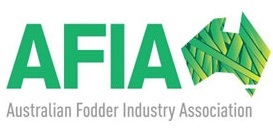U.S. Livestock Numbers Continue to Expand
- By: "Farm Tender" News
- Cropping & Grain News
- Dec 12, 2019
- 680 views
- Share

This article is bought to you by Entegra Sheds and the Australian Fodder Industry Association.
By Walter Kunisch Jr.
Despite the prospect of tighter corn and soybean crops, the number of cattle, hog and broilers in the U.S. have continued to expand during 2019. Livestock expansion in the U.S. has been consistent and aided by positive producer margins amid low input costs, a strong demand structure and superior animal genetics.
A closer look at supply for cattle, hogs and broilers
Let's examine the supply structure of the three animals classes:
Cattle
Fueled by strong margins throughout the supply chain, the U.S. cattle herd has been expanding since 2015. Starting upstream, the sustained demand for feeder cattle by the commercial feedlot has been aided by positive crush margins, which have been supported by robust U.S. corn supplies. Lack of drought in the primary cattle producing/feeding states has provided the backgrounder with a low cost of gain, which has also assisted with the margin structure. The strong U.S. dollar has also been beneficial in assisting the U.S. herd grow as Canadian and Mexican feeder cattle imports have been consistent. Downstream demand for live cattle by the packer has been aided by a robust domestic demand structure that we believe is partly the result of a strong U.S. economy. Competitively priced wholesale beef prices and a record volume of cattle being graded choice or higher has continued to fuel both consumer and commercial beef demand.
While September and October placements have been encouraging, we expect that 2020 cattle supplies should be higher than 2019. Looking ahead, we continue to monitor the percentage of heifers on feed as a potential signal about the status of the cattle breeding herd. This metric can be used to help determine the potential for herd liquidation or expansion. From around June 2016 to now, the percentage of heifers on feed has been steadily increasing. From the most recent data from the USDA’s quarterly cattle by-class survey in the October Cattle on Feed report, the percentage of heifers on feed indicates that the U.S. breeding herd may have reached an equilibrium state or a mild contractionary phase. If a mild contraction, then we expect that feedlot inventory levels in 2020 can be higher than 2019 as more heifers enter the feedlot.

Hogs
The state of the U.S. hog herd has been a steady and almost linear growth pattern since 2015 when the herd was impacted by an acute outbreak of porcine epidemic diarrhea virus (PED). The aggressive gilt retention rate of 2015 helped introduce enhanced swine genetics into the U.S. breeding herd, which has resulted in perpetual quarterly increases in sow efficiency, as expressed by pigs per litter. The number of pigs per litter has been a material driver of herd expansion as the metric underscores how superior breeding genetics are helping gains in sow productivity. This was evident in the USDA’s September 2019 Hogs & Pigs report, which showed that national July-August farrowings were flat from 2018. However, the record number of 11.11 pigs per litter helped propel the pig crop to 35.3 million head -- 2.9% above 2018.
Ad - Make you next Shed an Entegra Shed - The best in the business - Ad
Ad -The Australian Fodder Industry Association supports the Hay and Fodder Industry. Click here for more info or to become a member today - Ad
The September report illustrated that U.S. September-November farrowing intentions fell by 1% from 2018. Farrowing intentions for December-February are down 0.5% from 2019. North Carolina, Ohio and Nebraska are expected to see farrowings increase during the December-February time period. Both Minnesota and Indiana are reported to have the largest year-on-year decline in farrowing intentions while Iowa and Illinois are weak and flat.
We believe that the declining farrowing intentions can be attributed to the prospects of stronger regional corn basis, which can negatively impact hog producing margins. Despite the flat farrowings number, the USDA estimates that gains in the estimated pigs per litter will drive expansion and push the pig crop above 2018 and 2019 levels. Larger estimated pig crops in late 2019 and early 2020 should be supportive of market hog supplies. However, we believe that the number of gilts, kept for breeding at +1.6% YoY, illustrates a level of producer optimism. Minnesota, Iowa, Illinois, Nebraska and South Dakota all saw YoY increases in the breeding herd, which we believe can be supportive of future feed demand.


Broilers
Similar to cattle and hogs, the U.S. broiler flock has also been expanding over the past few years. The number of weekly reported broiler egg sets and chick placements continues to progress in an upward trend. During 2019, the U.S. broiler and layer flock have been well above 2018 levels and at historical highs. While there is a seasonal component to the placements patterns, USDA data in September showed that broiler egg sets were +5.1% YoY and +3% during October.
We believe that competitively priced feed inputs and a strong domestic and export demand have aided the upward trend in flock expansion. We also believe that China’s announcement on Thursday, Nov. 14, that the country will remove the 2015 import ban on U.S. poultry imports “effective immediately” is a positive signal for both the broiler industry and for corn and soybean disappearance. Given this development, we believe that increased export demand can be supportive of broiler prices, which should incentivize producers to expand the flock.

Conclusion
Expansion of domestic animal classes has been supportive of soybean meal and corn demand. Both domestic and export demand has been a positive for the disappearance of beef and pork.
We believe that China’s recent announcement to start importing U.S. poultry is a positive and can possibly be a game-changer for the U.S. farmer. While U.S. pork is still subject to a 25% Chinese import tariff, the country has been procuring material volumes from the U.S. in sporadic tranches. We believe that it’s important to exercise caution when it comes to relying on China for export disappearance, but African swine fever (ASF) should present a greater sense of urgency.
With increased export opportunities comes increased demand for animal supplies. And with regional corn and soybean supplies in question, we believe that declining ethanol production can limit DDGS supplies, which can be supportive of corn for feed use.
Ad - Make you next Shed an Entegra Shed - The best in the business - AdAd -The Australian Fodder Industry Association supports the Hay and Fodder Industry. Click here for more info or to become a member today - Ad













Share Ag News Via